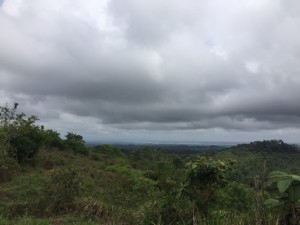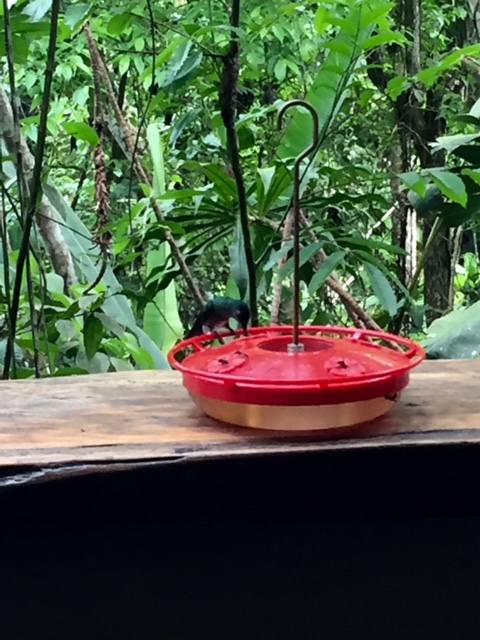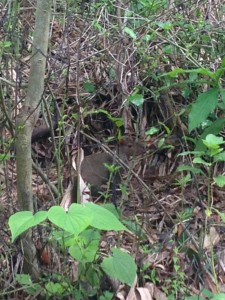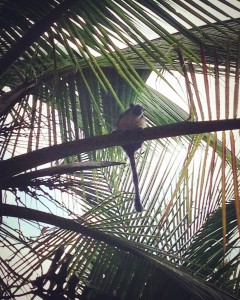Today, our study abroad group visited Agua Salud, which is a research initiative partnered with the Smithsonian Tropical Research Institute (STRI) that focuses on ecosystem services or benefits gained from a natural resource in the Panama Canal watershed. There are four types of ecosystem services: supporting services, which provide for the rest of ecosystem, provisioning services, products obtained from ecosystems like natural medicines, regulating services, benefits from a regulating ecosystem such as water and air quality, and cultural services, intangible benefits people get from an ecosystem like recreational activities. Agua Salud studies a variety of these services and primarily looks at regulating and supporting services in a tropical forest as most of the area’s water supports the Panama Canal.
The Agua Salud project, which was established in 1980 and later reinitiated for research purposes in 2008, has been involved in numerous research projects throughout the years. Previous studies include: soil analyses and meteorological trends. Findings found that tropical forest soils support the sponge hypothesis as it acts like a “sponge” because they are porous and able to store large quantities of water throughout various seasons within an ecosystem. The significance of these studies showed that forests contribute to clean watersheds and improved water quality.
Current work consists of three main study areas: hydrology, secondary forest, and timber production. Hydrology, the study of water, is used at Agua Salud to research the forest’s watershed. A watershed is a system that carries water from high elevation to low elevation, draining the water to a specific source. At Agua Salud, there are nine watersheds that drain into one stream. Scientists are able to measure how the watershed changes through time and how a watershed can change land usage.
Secondary forest research at Agua Salud is related to hydrological studies because the amount of water and other components availability can determine the growth of a forest. One of these components Agua Salud studies is carbon. Researchers look at how carbon can affect forest growth by creating 25 year chronosequences of secondary succession land plots. A chronosequence is a method used to avoid the time needed for plants to grow by arranging plots of soils based on age. By using chronosequences, Agua Salud is able to document patterns in the area’s tropical forests.
Timber production research looks at how production can be maximized. Coffee, pineapple, timber, teak, and even lemon trees are grown on plots throughout Agua Salud. While a majority of plants are successful at growing, the teak plots are not successful. Teak is a non-native species and the soils in Agua Salud contain a high concentration of Iron, which is not preferable for teak growth. Along with timber production research, some plots are also cut down to conduct a competition experiment between the varieties of tree species in Agua Salud.
The research conducted at the Agua Salud project has brought global attention to the variety of services a tropical forest can provide. Current studies of hydrology, secondary forest growth, and timber production are important aspects in understanding ecosystem services.
Majority of this information can be found at:
http://biogeodb.stri.si.edu/bioinformatics/sigeo/aguasalud/data/docs/Stallard_2010_AWRA_I.pdf
http://ctfs.si.edu/Public/pdfs/ToDelete/2010_3Q_Ogden_et_al_AWRA_Proc.pdf


















